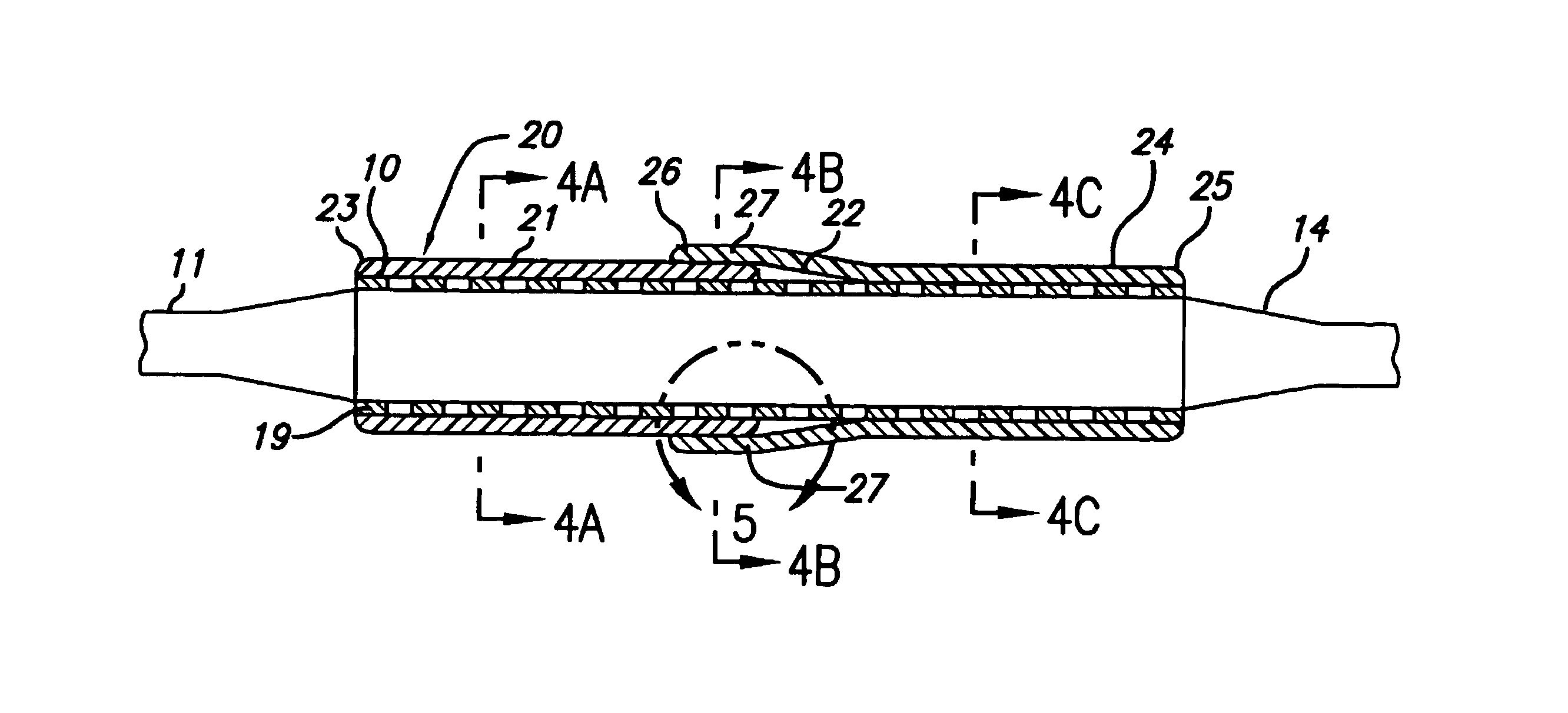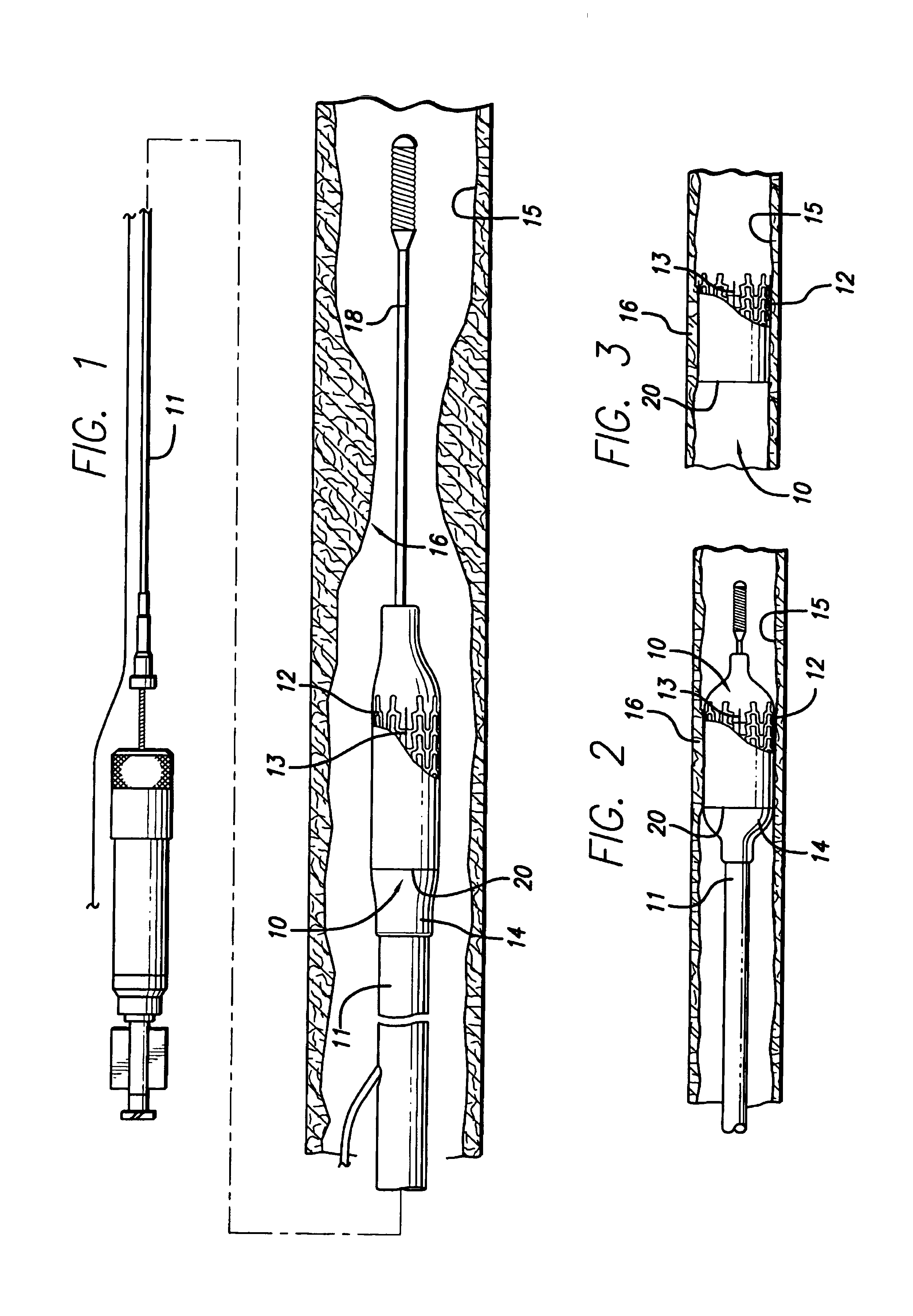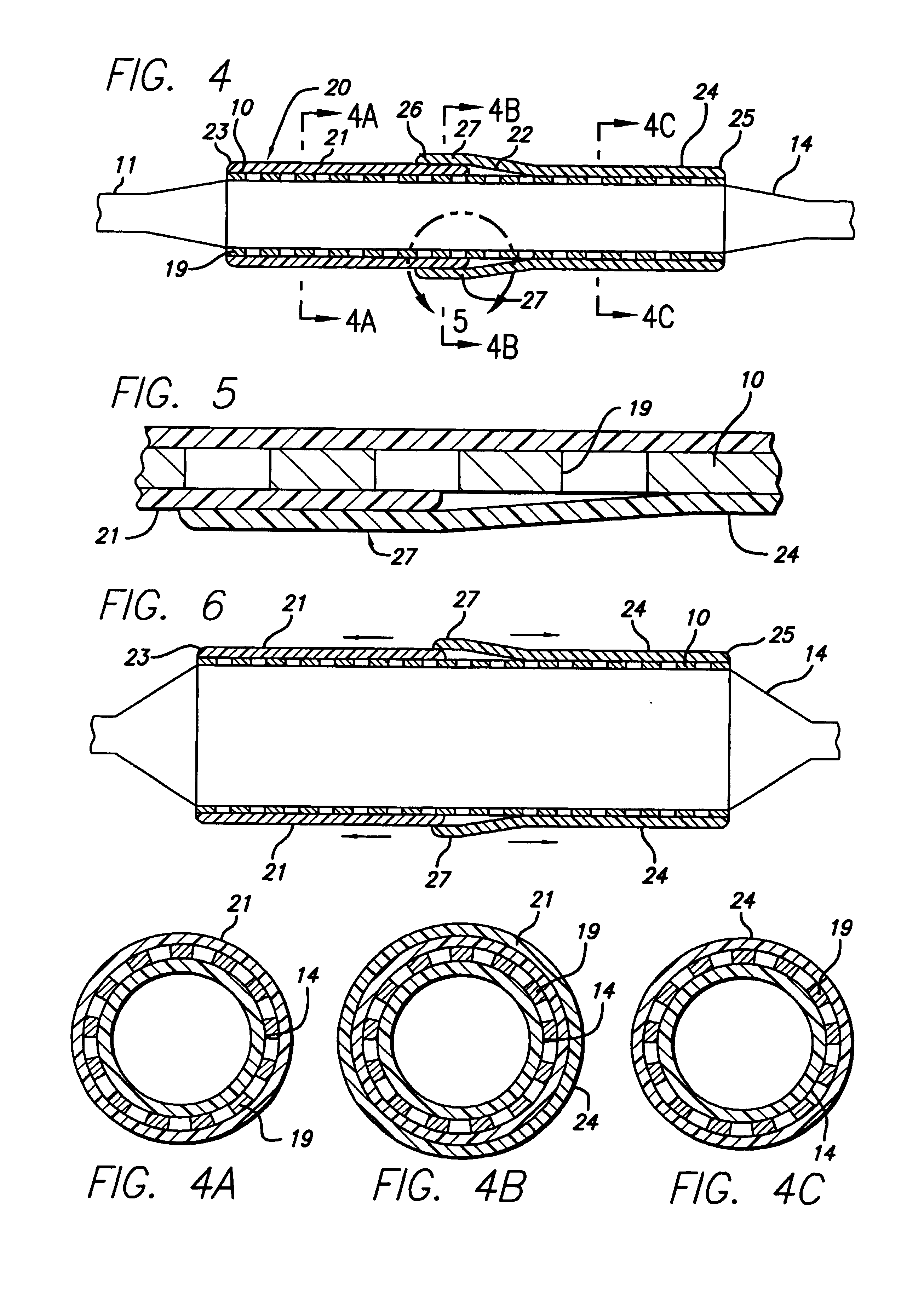Covered stent assembly for reduced-shortening during stent expansion
a stent and stent technology, applied in the field of expandable endoprosthesis devices, can solve the problems of affecting the stent's expansion rate, the inability to fully rest, and the potential for atherosclerotic plaque particles, so as to speed up the endothelialization process, minimize the shrinkage of the stent, and minimize the shortening of the stent
- Summary
- Abstract
- Description
- Claims
- Application Information
AI Technical Summary
Benefits of technology
Problems solved by technology
Method used
Image
Examples
Embodiment Construction
[0032]FIGS. 1-3 illustrate a first embodiment of a covered stent 10 incorporating features of the invention which is mounted onto a delivery catheter 11. The covered stent generally comprises a plurality of radially expandable cylindrical elements 12 disposed generally coaxially, interconnected by interconnecting members 13 disposed between adjacent cylindrical elements and covered with polymeric material. The delivery catheter has an expandable portion or balloon 14 for expanding the covered stent within an artery 15 or other vessel. The artery, as shown in FIG. 1, has a lesion 16 which has occluded a portion of the arterial passageway.
[0033]The delivery catheter onto which the covered stent is mounted is essentially the same as a conventional balloon dilatation catheter for angioplasty procedures. The balloon may be formed of suitable materials such as polyethylene, polyurethane, PEBAX, polyethylene terephthalate, polyvinyl chloride, nylon and ionomers such as Surlyn® manufactured...
PUM
 Login to View More
Login to View More Abstract
Description
Claims
Application Information
 Login to View More
Login to View More - R&D
- Intellectual Property
- Life Sciences
- Materials
- Tech Scout
- Unparalleled Data Quality
- Higher Quality Content
- 60% Fewer Hallucinations
Browse by: Latest US Patents, China's latest patents, Technical Efficacy Thesaurus, Application Domain, Technology Topic, Popular Technical Reports.
© 2025 PatSnap. All rights reserved.Legal|Privacy policy|Modern Slavery Act Transparency Statement|Sitemap|About US| Contact US: help@patsnap.com



